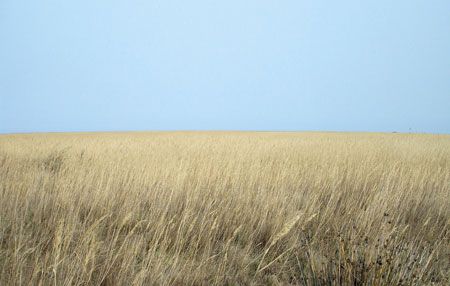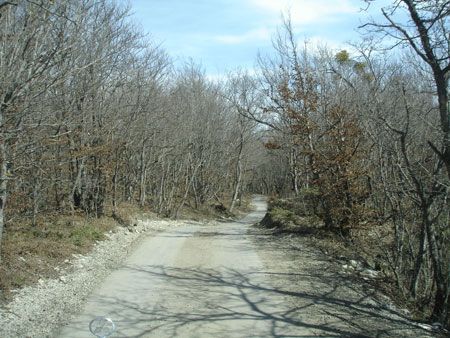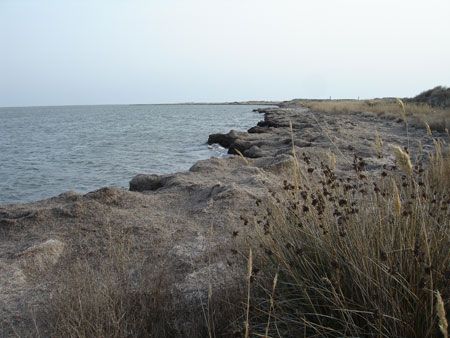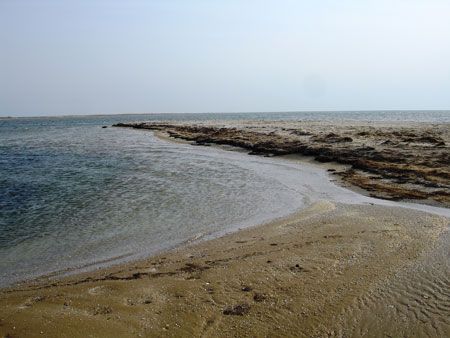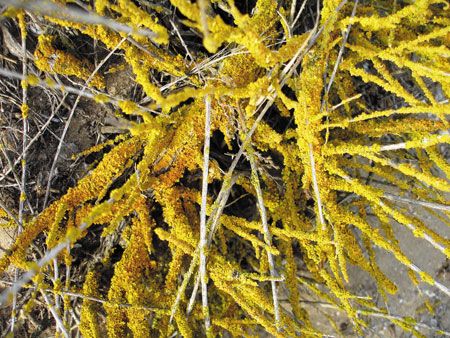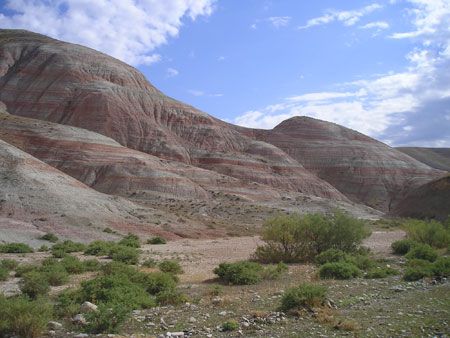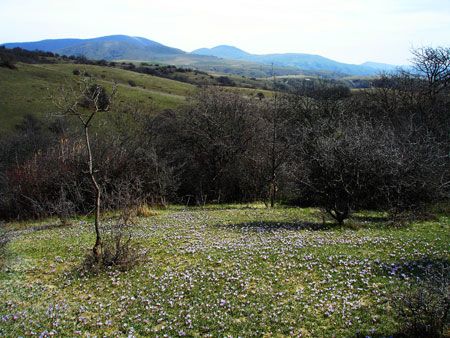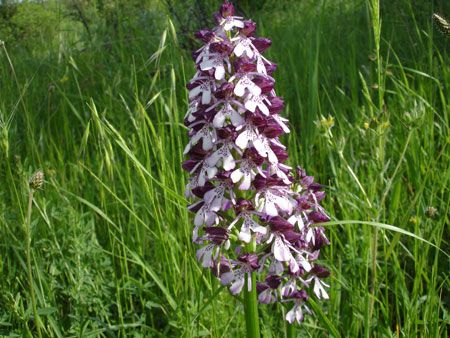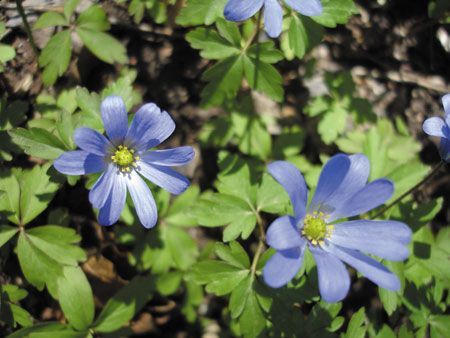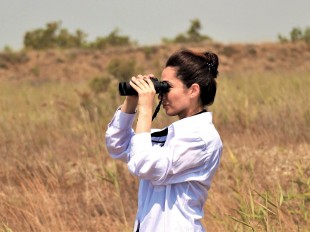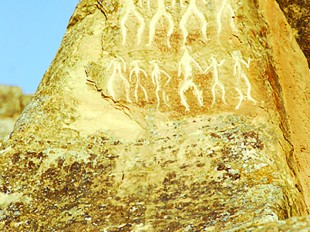Climatic and geographical variety within such a small area is unmatched by any other country - just a few hours´ drive takes you from semi-desert through grasslands and forest and up to unique villages and mountain passes, cut off by snow except in summer, and these are still virtually at the foot of Europe´s highest mountains. Add to this fascinating diversity of landscape the fact that Azerbaijan was for many recent years relatively unexplored because of Soviet restrictions. Prior to this, Azerbaijan´s location at the crossroads of civilizations was of strategic importance. The same can be said of today´s Azerbaijan.
Rural life here follows an ancient pattern. There are vast agricultural landscapes which are still largely tended by hand, where no pest
icides or fertilisers are used; meadows filled with brightly coloured wild flowers; land is generally unfenced; shepherds herd their flocks of sheep and goats; horses and donkeys are a part of everyday life and every child can ride bareback. Summers are hot and winters cold, and every year follows the same seasonal pattern of planting, bumper harvests and storing for winter. Rural life in Azerbaijan sounds idyllic, and for us onlookers it is. However, those involved in the daily grind are probably more than glad to see the arrival of shiny tractors, combine harvesters, new roads and so on.
Today´s explorers, and indeed property developers, can wander much of Azerbaijan with a freedom almost unknown in history. The rural population is under pressure to make a living. Together these put immense pressure on this special environment.
Internationally recognised National Parks, therefore, can hopefully preserve some of the idyll, while supporting those that live within the boundaries, whether flora, fauna or man.
Of course the parks have not been open for long, and the practicalities of running and staffing
the parks for visitors is still in the early stages. But I have decided to visit them all in turn and, with special permission from the Ministry of Ecology and Natural Resources who are happy to support my venture, I shall let you know how I get on.
The signs at the entrance to the parks list optimistically the species which the park is intended to protect. For further information on this, it is best to speak directly to the Ministry of Ecology and Natural Resources, because information at the parks is limited. If there is something in particular that you want to see, or a species you want to know about, then this is your best route to information. Staff at the Ministry in Baku speak good English and will be delighted and proud to help you.
Any difficulties you may have in arranging your trip will be offset by the pleasure of being amongst the first eco-tourists in Azerbaijan, and seeing such a wonderful environment at first hand. (And then, like me, you will want to share the experience.)
For further information, the Azerbaijani Ministry of Ecology and Natural Resources can be contacted by email in English, Russian or Azerbaijani at ekologiya.nazirliyi@gmail.com. Their new website http://www.eco.gov.az/ should also be a good resource.
Altiaghaj National Park
Situated about an hour and a half´s drivefrom Baku (120 km), Altiaghaj is a world away from the dry semi-desert which surrounds the city. It is difficult to believe you are on the same planet, as it is such a particularly beautiful and restful area. This is one of my favourite days out from Baku. Winter or summer (though preferably spring for the flowers), there is always plenty to see.
Drive north from Baku past Sumqayit, the old Soviet industrial city, and onto the dual carriageway heading up the coast towards Quba. After some distance the dual carriage way becomes a two way road, and a further 7 km ahead, in the village of Galesi, turn left towards the village of Khizi (Xızı). Once off the main road and through the village you are into the foothills of the Caucasus Mountains, travelling up the Tikhli River valley, past the wonderful hilly landscape dubbed the Candy Cane Mountains by travel writer Mark Elliot. Keep straight on, and as you climb out of the valley the vegetation becomes greener and greener, and in spring and early summer the roadside flowers are fantastic, whetting your appetite for the National Park ahead. Just stop and take a walk and you´ll find dainty purple Iris reticulata among
those grazing cows with bells around their necks; a little bit later in the season you´ll find bee orchids; then crops filled with magnificent purple wild gladioli. Khizi village, at the top of the hill, is the capital of Khizi District, but despite its official importance there isn´t much to stop for, except the unexpected traffic lights.
Beyond Khizi the road drops back down, via a hairpin bend, into a valley set in a scenic undulating landscape of hills and deciduous forest. Follow the road and you will drive through the entrance to the National Park. The facilities here are new and comprise a good space for educational purposes with a classroom and so on.
This park covers over 11,000 hectares and comprises mostly deciduous mountain forest. It was established in 2004 on a state nature reserve and took in some adjacent state-owned forest land as well. The park borders villages with the prettiest of white and blue painted Russian cottages. While it´s an easy day trip, many people like to come and stay in this beautiful area, particularly in summer, and there are various popular accommodation options in the vicinity. Delicious samovar chay is served in little chaykhanas or tea gardens in the woods
by the river. Up above in the forest, bears roam free in this wonderful environment, protected by national park status.
Ask at the entrance office about what you can access in the park. There is a road route around the park, some 20-25 km long, which takes in the variety of scenery including a very special meandering mountainside section through deep forest. Some of the route affords wide open views across open landscape studded with juniper.
In early March the forest floor has drifts of snowdrops; in the open clearings the wet flushes are home to masses of spring flowering crocuses. Later in the month Scilla and then Primula and tiny violets take over, with Muscari in the dry open areas. Then cowslips and anemones (the Caucasian anemone, Anemone Caucasica). In May the forest floor is shaded but in the clearings you will find beautiful orchids. Wild sweet peas, campanulas and many other flowers are just at the roadside. There are so many species endemic to this part of the world to look out for. Access to exquisite plant life couldn´t be easier.
When leaving the park and heading back to Baku, stop in the Candy Canes and pay a visit to the Mushfiq Museum to find out about the unfortunate story of the poet Mikayil Mushfiq who loved his country. Look out for the statue of a tar on
Absheron National Park
Or how to stand on the tip of an eagle´s beakAfter a trip to the Absheron National Park, I was telling my friends all about it. You get to stand right on the very tip of the eagle´s beak –something I had wanted to do ever since I came to Azerbaijan. The shape of the map of Azerbaijan is often described as an eagle in flight, with the Absheron Peninsula, which extends out into the Caspian Sea, as the beak of the eagle.
The Absheron National Park, comprising some 783 hectares of low lying semi-desert grassland, is at the very end of the Absheron Peninsula. Formerly a nature reserve, this area was decreed a National Park in 2005.
To reach the park you need to drive approximately 70 km from Baku, roughly an hour´s drive. Head out past the airport and then take a right turn following signs to Zira. Here you are right in the middle of the Absheron Peninsula, and the flat relatively featureless landscape alternates between olive groves, oil industry nodding donkeys, low lying villages and desert scrub land. It´s a little hard
to believe you are on your way to a national park. Turn right immediately after the Abu Petrol station and you enter the Zira settlement. Continue to the left and nature takes over as glimpses of the Caspian Sea on either side of the road give clues to the approaching end of the peninsula. And just when there is seemingly nothing else left to turn up to, here is the entrance to the National Park. Entrance is by ticket at the gate, 2 AZN for Azerbaijani visitors, and 4 AZN for foreign citizens.
Our guide for the afternoon was Namiq. He has worked at the park since 1998 and has been involved in protecting the area. His knowledge is based on his experience of the park over these years. What do you want to see? – he asked. Everything, I replied. He jumped in our car and we were off. Namiq doesn´t speak any English, but I had been warned beforehand so had taken Visions editorial board member Vusala to help me with the translating.
We travelled in our personal car, but it was a bit ´city smart´ for the terrain, and I would recommend a local Lada Niva 4x4 or an old UAZ jeep if you can get hold of one. We drove along tracks which were barely perceptible through the grassland, over the sandy terrain, along the beaches, and through a shallow lake. Namiq was confident in our route, and as we went he explained how the peninsula had been under water depending on the level of the Caspian Sea, which rises and falls. He explained something of land use during Soviet times, how melons had been grown here, Chinar (or plane) trees planted, and how this had been affected by the changing, brackish water levels and the high levels of salt exposure. There are also some old concrete remains from Soviet oil exploration.
Being March the most colourful aspect of the landscape was the amazingly bright yellow lichen, which features on the local entrance ticket. We saw plenty of large birds of prey which Namiq told us were eagles, and greenheaded ducks (mallards) and some large white vulture-like birds. Typically you might expect to see jackals or foxes, though we didn´t. Come in May for the colourful flowers, Namiq told us, and in May or June you can go by boat to Tyulen or Seal Island to see the Caspian seals. German scientists apparently spent some time here last summer (2007) studying the grasses.
However, Namiq very proudly found us two other much loved park inhabitants - a couple of grand old lady Bactrian camels. We had followed their footprints along the sands and Namiq had eagerly watched out for them, keen for us to get a good look.
For me the tip of the eagle´s beak was the highlight. Whether this highlight is enough to drag you out from the cosy cafe bars of Baku (or air-conditioned, depending on the time of year) is up to you. You can bring your own picnic and eat on the beach, though they don´t allow swimming. But a visit to this park is the closest you´ll get to discovering what the countryside just outside Baku was really like, many years ago. A visit here might be low key, but nonetheless the environment is special. The Ministry of Ecology and Natural Resources have plans to extend the facilities here to include, for example, picnic areas.
Well done to the conservationists of Absheron National Park!
